- Home
- Farley Mowat
Bay of Spirits: A Love Story Page 5
Bay of Spirits: A Love Story Read online
Page 5
With a collision looming, I bellowed to Mike.
“Hard a-starboard! Hard over! Quick!”
No blame for what followed should attach to him. He had only just learned that “starboard” meant “right.” He had only just learned to steer a boat with a tiller. Happy Adventure swung to port. We were travelling at about five knots, which is no great speed, but the shark was very nearly an immovable object. We hit him just behind the dorsal fin. There was a rubbery jolt that almost catapulted me from the crosstree. I don’t believe he suffered any serious injury as our cut-water slid up on his slippery back. I don’t know about his dignity, but I lost any I possessed as I slid down the mast like a monkey on a greased pole.
It was a wonderful day to be at sea, and the denizens of the ocean seemed to be making the most of it. Skeins of cormorants and gannets threaded the pale blue sky as rafts of eider ducks bobbled out of Happy Adventure’s way, casting anxious looks at us over their shoulders. The breeze held steady and Happy Adventure practically sailed herself, leaving us to laze about on deck singing Newfoundland songs and toasting the Old Man of the Sea with Mike’s rum.
As evening drew on we entered the Passe de Nord-est, leading into St. Pierre’s harbour, where we were overtaken by a big seagoing dory under power. Her name, Oregon, was writ large on her bow. I recognized her and her owner, bull-voiced Théophile Detcheverry, who, during my visit to St. Pierre in 1957, had taken me to the site of Fort Boise’s stranding. I had said then that I would return someday and now here I was in my own boat.
The Angels Sing
Les Isles de St. Pierre et Miquelon are a remarkable anomaly, a tiny piece of France consisting chiefly of three sombre mounds of granite rising out of once fish-filled waters some twelve miles off the south coast of Newfoundland. St. Pierre is a mere four miles long and four wide but, possessed of the archipelago’s only deep-water harbour, it became home to the largest settlement.
Three miles to the northwest and separated from St. Pierre by a strait mysteriously called La Baie is Langlade or Petit Miquelon. Farther to the north lies Grand Miquelon. These two are twins linked by a remarkable umbilicus–a seven-mile-long isthmus of sand whose shores boast some of the most spectacular beaches on the northwestern coast of the continent.
The islands were well forested until the arrival of Europeans. Now they are mostly barren, nurturing only scrubby patches of conifers and willows in the most sheltered places. They were denuded (as were the coastal regions of Newfoundland) by far-faring fishers of whales and cod, mostly from the coasts of Portugal and the Bay of Biscay (Bay of the Basques), who as early as the mid-fifteenth century began building their whale-oil tryworks, stages, and fish-drying flakes on the little archipelago.
Few localities in the New World offered better bases for transatlantic fishermen. In consequence, Les Isles long remained bones of contention to be fought over, not just by individual squatters but by nations. They changed hands several times but in the end were retained by France as a last fragment of the far-flung lands she had once claimed in North America.
When Happy Adventure arrived at St. Pierre, the compact town had nearly three thousand inhabitants. Its crowded houses, narrow lanes, abundance of bistros and cafés, sprawling quays, and a central place where old men played the ancient bowling game of pelota all gave the impression that this was a part of France that had somehow gone adrift across the foggy waters of the western Atlantic. But although the tricolour flew over it and metropolitan gendarmes patrolled its streets, St. Pierre’s inhabitants were of two nations. The majority were descendants of fishermen from ports on the coast of Normandy, but a significant minority were of Basque origin and still used the ancient language of that intractable race which, to this day, has refused to be assimilated by any other.
Théophile Detcheverry was a citizen of France but he was first and foremost a Basque. In his early sixties, solidly built, he had a saturnine, hawk-nosed face and a knowing air. He seemed delighted at my return to what he called, perhaps with some irony, the islands of the blessed. Born of and into the small, almost solidly Basque community that was the only settlement on Miquelon, his allegiance belonged to that mysterious people, not to anything as Johnny-come-lately to history as the French.
Claire and Théophile Detcheverry.
There was more. During the recent war he had actively supported General de Gaulle and the Free French, whereas many St. Pierrais had favoured Marshal Pétain and his collaboration with the Nazis. Théo was also an agnostic with a soft spot for the Baha’i religion whereas most St. Pierrais were at least nominal Roman Catholics. To top it off, he was a fervent socialist in a community dominated by a well entrenched merchant class.
Brimming with primal energy and instinct, Théo vigorously pursued every good-looking woman he encountered. He had fathered four children in wedlock and who knows how many outside of it. Nevertheless, his heart belonged not to a woman but to a boat.
She was his dory, Oregon.
Oregon and her sisters were unique to the isles. Twenty-three feet in length, she was almost half as long again as most dories used in the Newfoundland fishery. She was propelled by two pairs of sweeps, a sail of sorts, and a four-horsepower make-and-break engine fitted with a retractable shaft and propeller that could be raised into a housing in her bottom, thus enabling her to be run over shoals. She and her sisters needed no sheltered harbours. They could fish from the “hard” of any sand or gravel beach, where they could be hauled up by wooden windlasses. They had no equal for seaworthiness, regularly venturing out as much as thirty miles to fish the offshore banks. Gull-fashion, they could ride out stormy weather that would send much larger vessels scuttling for shelter.
Théo’s dory had been built for him in Miquelon in 1928 and originally christened Térèse in memory of his mother. He fished her single-handed until he had saved enough money to marry the girl he wanted. Things went well for the couple until the Great Depression began. Then the market for salt fish collapsed, forcing Théo to mortgage his treasured dory to a St. Pierre merchant.
In the winter of 1932 the American steamer Oregon, bound from Montreal to Britain with freight and passengers, diverted to St. Pierre, seeking shelter from a storm that was rapidly developing into a hurricane. By the time the ship had struggled to within sight of the islands, wind and sea were so fierce her captain dared not risk the rock-guarded entrance without a pilot, so he hove to in the maelstrom and radioed for one. By then conditions were so bad the pilots concluded they would be unable to reach her. None would try, but there was one fisherman in St. Pierre who would.
As Théophile Detcheverry recalled his moment of decision: “Bien, it was not possible just to let that ship blow down upon the reefs. Perhaps it was also not possible to get aboard her; but me, I believed maybe if I could get out to her I could lead her into port like a dog brings a cow into the barn.”
A crowd of fellow fishermen helped him launch his dory. Then, when nobody volunteered to accompany him, Théo set off alone. Once in the outer harbour the dory could hardly make headway, pitching so high into the spray-filled air and slamming down so hard against the grey-beard seas that watchers on shore expected to see her break her back. Théo resolutely kept her heading into the breaking seas and, foot by foot, the dory fought her way toward Oregon, which by then was labouring so heavily she seemed to be half-submerged as she tried to prevent herself from being driven onto the roaring reefs and islets at the mouth of Passe du Nord-est.
One of the officers clinging to the wing of her bridge spotted the dory when it was only a few hundred feet distant. The cacophony of wind and waves was by then so overwhelming that Théo could not communicate with the ship, except visually. Using one arm to prevent himself being pitched overboard, he waved frantically with the other.
His meaning was unmistakable: FOLLOW ME!
Choosing his moment as the dory sank into the trough between two mighty seas, he slewed her around before she could be caught broadside and capsized. The steam
er attempted to do likewise. As the ship came broadside to seas almost as high as her bridge, she rolled so far down Théo thought she would go right over. Somehow she righted herself and slowly followed her barely visible guide between the reefs, into the lee of the land, and so to the safety of an anchorage in the roads of the outer harbour.
Her passengers and crew made much of Théo, collecting a purse of three hundred dollars for him. He used the money to pay off the debt against his dory, to whom he now gave a new name. From now on she would be Oregon. When I asked him why he had made the change, he shrugged.
“Eh bien, it was her save that Yankee ship you know. Me? I was along for the ride.”
After helping us moor Happy Adventure, Théo took Mike and me to his rambling old house for supper. We were joined there by Martin Dutin, a bouncy municipal fonctionnaire from France, now married to Odille, one of Théo’s daughters; and by Théo’s son George and his French-born wife. George was the master of a twenty-thousand-ton tanker sailing out of Marseilles, but was home on the islands for a holiday.
The party lasted into the small hours, and Théo became fixated on my little vessel, which, he said, was un petit fantôme–a little ghost of the ships his ancestors had sailed in.
“In old times, you understand, Basque ships carried our flag all over the Atlantique, whaling, and trading with a hundred countries, and finding the way to strange places. Like those Phoenicians in ancient times we Basques were masters of the northern seas. Then, because there were not so many of us in our little mountain countries by the Bay of Biscay–they are called provinces now–we were driven off the seas by the French and Spaniards, who took our ships, our ports, and our flag, and would have buried us had we not kept our language and our memories alive. These they could not take. What a pleasure it would be to see a ship sailing the seas again with our flag flying at her truck!”
It may have been the passion in his voice, or it may have been the fact that my glass had not been empty since our arrival in St. Pierre. I was in the mood to make grand gestures.
“Théo, I know my boat’s just a little bit of a thing but I’d be happy to have her fly your flag.”
In an instant he was on his feet, bellowing: “Nom de nom! Then we will get her one! Oui! We will do more: we Basques of Miquelon, we will adopt your little ship and you and Michel, and make you all Basques!”
Théo’s wife, Bernice, promised to make the flag for us. Théo undertook to make a Basque translation of Happy Adventure and paint it on her bows and stern. Martin Dutin volunteered to arrange a ceremonial re-christening and blessing of the vessel. Somewhat carried away, George Detcheverry declared his intention of sailing the new Basque flagship back to the homeland.
There remained one small problem. It came to light next morning when I stepped out of my bunk into six inches of icy water. My ship was once again sinking under me.
Helped by the crew of a nearby Spanish dragger, Mike and I pumped like mad and finally got the water level down below the floorboards but it was clear nothing would halt the inflow short of hauling the vessel out and finding and sealing the leak, which, I suspected, had resulted from our collision with the basking shark.
I was ready to run Happy Adventure aground on a mud bank at the inner end of the harbour and let the falling tide dry her out, when a red-faced, bald-headed fellow who introduced himself as Paulo Lescoublet, foreman of the St. Pierre Shipyards, offered to haul her out of the water on one of the wheeled cradles of the yard’s steam-powered marine railway. An hour later Happy Adventure rose dripping from the polluted harbour, like Aphrodite rising from the foam, as Mike poetically put it.
Paulo Lescoublet.
A cursory examination revealed we had not got her out any too soon.
Not only was her cutwater cracked but the stop-waters were gone; also an entire plank in her port after-quarter was rotted through. And vibrations from the old bullgine had shaken most of the oakum out of her seams.
Martin Dutin arrived to stare incredulously, shake his head, and passionately urge Paulo to get his shipwrights to work at once because the christening was arranged for Thursday, three days hence. And no, it could not be delayed. A festival to celebrate the rebirth of the Basque mercantile marine had been scheduled and could not be postponed.
It was at this critical juncture that I fell in love.
Cupid was a dog named Blanche who belonged to the shipyard. His name was a puzzlement because Blanche was a very large, coal-black male. According to Théo, who was an expert in such matters, Blanche was a singularly horny male. While inside my vessel painting the cabin, I heard the sounds of a scuffle nearby. I poked my head out the companionway in time to see a lithesome young woman swarming up the ladder that leaned against Happy Adventure’s flank. Whining expectantly, Blanche was endeavouring to follow this attractive stranger.
I could see why. As slim and graceful as a ballet dancer (which, I would later learn, was one of her avocations), she appeared to be wearing a gleaming golden helmet (her own smoothly bobbed head of hair) and was as radiantly lovely as any Saxon goddess.
I invited her aboard, while pushing the dog down the ladder.
“That’s only Blanche,” I reassured my visitor. “He won’t bite. He’s just, uh…being friendly.”
“That’s nice to know,” she said sweetly.
Then she smiled and I was lost.
Claire Angel Wheeler was then twenty-seven. Born in Toronto to a First World War veteran and his English war bride, Claire had lived all her life in that city. A graduate of the Ontario College of Art with an adventurous spirit, she longed to experience something of what lay beyond Toronto’s confines. She also wanted to learn colloquial French, so when she heard about a summer school–l’École Orale Française–being started in St. Pierre, she travelled east to enrol in its first session.
On this fine day she had come down to the waterfront to sketch the vessels hauled out at the shipyard. When Blanche spotted Claire, she had sought refuge on top of a pile of lumber. When the indefatigable Blanche pursued her there, she climbed my ladder.
I was in no hurry to see her leave. Happy Adventure was due to be launched that afternoon so I invited Miss Wheeler to remain aboard for the occasion. She agreed, perhaps partly because Blanche was still pacing impatiently about at the foot of the ladder.
While waiting for Mike to return from some errand, and for Paulo to fire up the boiler of his winch engine, I showed my guest around my little vessel. Freshly painted inside and out, Happy Adventure had never looked (or smelled) better.
Claire examined the two very narrow bunks in the forepeak with interest but without comment. Nautical paraphernalia scattered around, including a gleaming brass patent log of early nineteenth-century manufacture designed to be towed astern to measure the speed and distance covered, appealed to the artist in her. A bundle of star flares for use if it became necessary to abandon ship seemed to give her food for thought.
She was intrigued by the little galley, which she said looked as if it belonged in a doll’s house with its pint-sized Primus stove, toy-like utensils, and miniature copper kettle. She noted that there was no sink but accepted without comment my explanation that there was no need for one since the ocean was wide, deep, and handy. And she endeared herself to me by not asking where the toilet was.
Claire averted her gaze from the monstrous phallus that was the bullgine’s single, upright cylinder, but gave a friendly pat to the iron Peanut heating stove, which though just big enough to hold three small lumps of coal was nevertheless capable of keeping Happy Adventure’s cabin cosy during the coldest weather.
She also appreciated Happy Adventure’s decor. I had received explicit instructions from Théo about the vessel’s colour scheme and had obeyed them to the letter.
“You will please to cover up that corpse-green colour of her hull and paint her black above the waterline. Her boot top, she will be white. Her bottom, she will be red. Her deck, she will be dory-buff. Her masts you will scrape, t
hen oil, and you will paint the mast-heads and the crosstrees white. When you have finish, she will not look like something very old and dead pulled out of the sea…she will look like a Basque ship should.”
I was still explaining Happy Adventure’s intricacies and mysteries when Mike returned. Shortly thereafter, Paulo blew a great blast on the steam whistle to warn the world that a launch was about to take place. Then the massive wheeled cradle holding Happy Adventure went rumbling down the rails, returning her to the sea with a resounding splash.
I started the engine, and we motored over to the government dock to pick up the harbour master, who had undertaken to adjust our compass. Under his instruction and under what I hoped were my guest’s admiring eyes, I steered my little vessel on various courses while the harbour master “swung” the compass, adjusting the direction its needle pointed by moving tiny magnets around the circumference of the brass compass housing.
This done, we moored alongside Paulo’s old wooden launch and trooped across the place to celebrate a day well spent, at the Café l’Éscale.
It had been singularly well spent as far as I was concerned. Much later, as I slowly walked Claire back to the house where she was boarding with a St. Pierre family, I sensed this might be the beginning of the happiest adventure of my life.
Happy Adventure began her new life as a Basque vessel two days later when Mike and I were wakened not long after dawn by a tentative knocking on the cabin trunk. Sleepily I slid back the hatch to find it was raining, but standing on the wet deck of Paulo’s old boat alongside was a bedraggled little group, including a lugubrious Dominican priest and two small boys who I assumed were acolytes. They were accompanied by Théo and George Detcheverry and Martin Dutin.

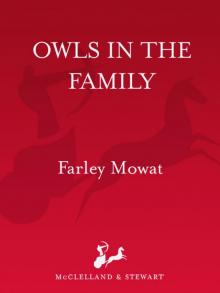 Owls in the Family
Owls in the Family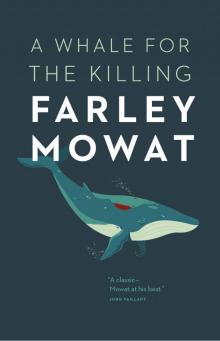 A Whale for the Killing
A Whale for the Killing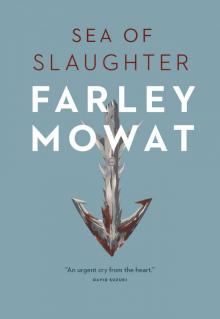 Sea of Slaughter
Sea of Slaughter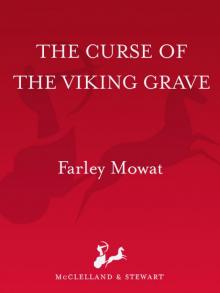 The Curse of the Viking Grave
The Curse of the Viking Grave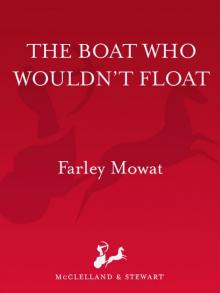 The Boat Who Wouldn't Float
The Boat Who Wouldn't Float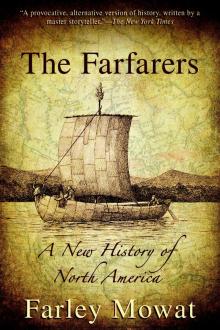 The Farfarers: Before the Norse
The Farfarers: Before the Norse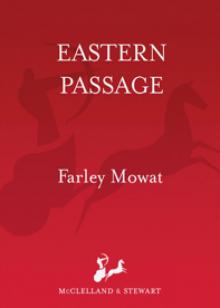 Memoir
Memoir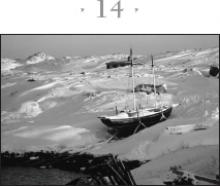 Bay of Spirits: A Love Story
Bay of Spirits: A Love Story The Black Joke
The Black Joke Sibir: My Discovery of Siberia
Sibir: My Discovery of Siberia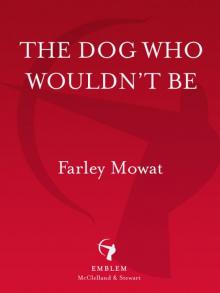 The Dog Who Wouldn't Be
The Dog Who Wouldn't Be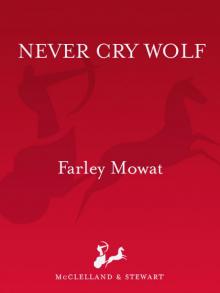 Never Cry Wolf
Never Cry Wolf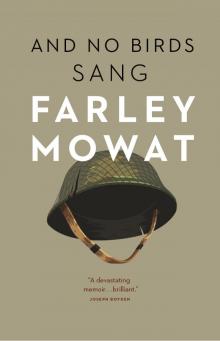 And No Birds Sang
And No Birds Sang The Snow Walker
The Snow Walker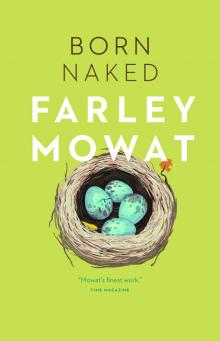 Born Naked: The Early Adventures of the Author of Never Cry Wolf
Born Naked: The Early Adventures of the Author of Never Cry Wolf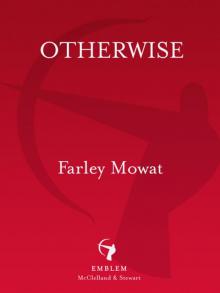 Otherwise
Otherwise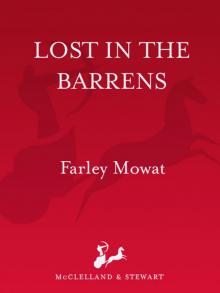 Lost in the Barrens
Lost in the Barrens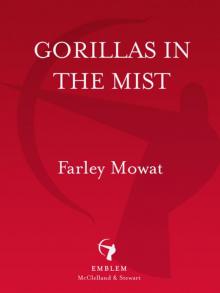 Gorillas in the Mist
Gorillas in the Mist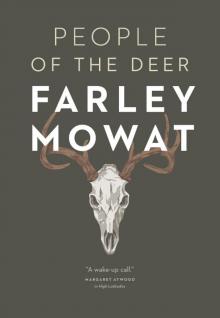 People of the Deer
People of the Deer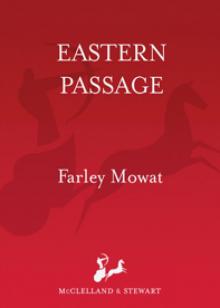 Eastern Passage
Eastern Passage Sibir
Sibir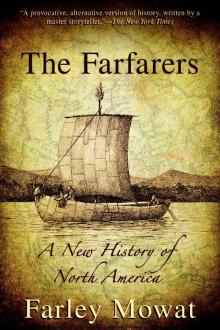 The Farfarers
The Farfarers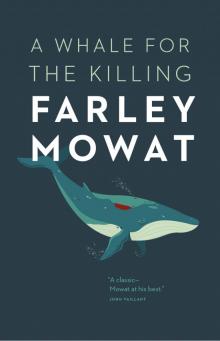 A Whale For The Killing (v5.0)
A Whale For The Killing (v5.0)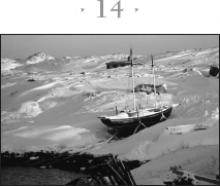 Bay of Spirits
Bay of Spirits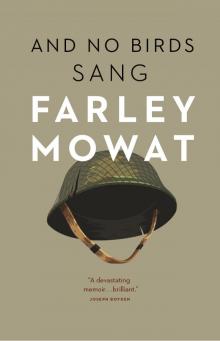 And No Birds Sang (v5.0)
And No Birds Sang (v5.0)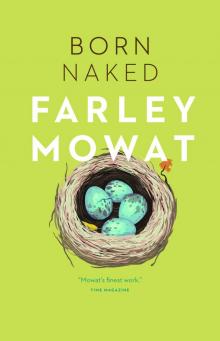 Born Naked
Born Naked